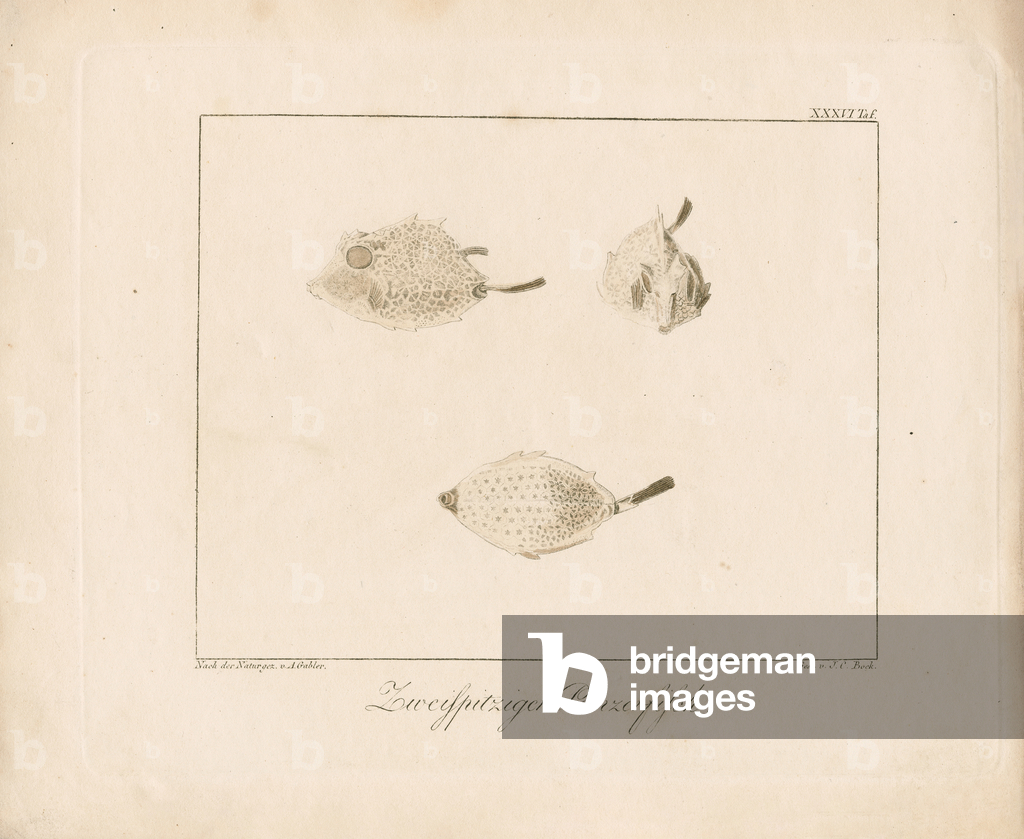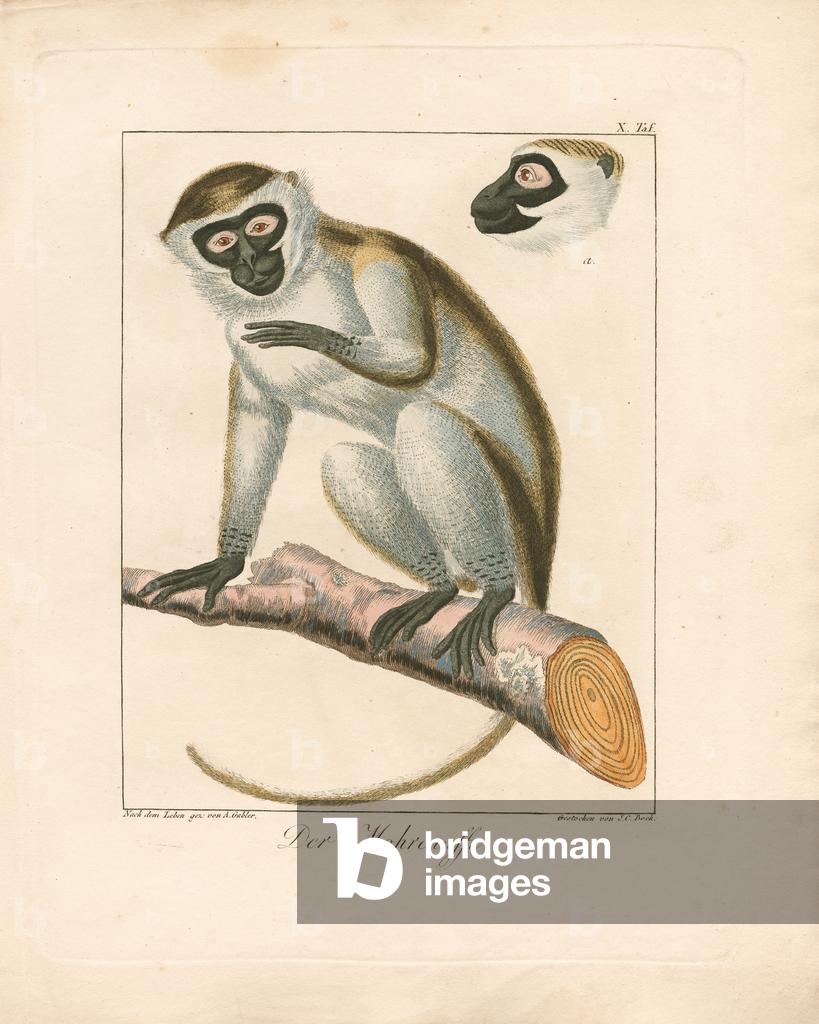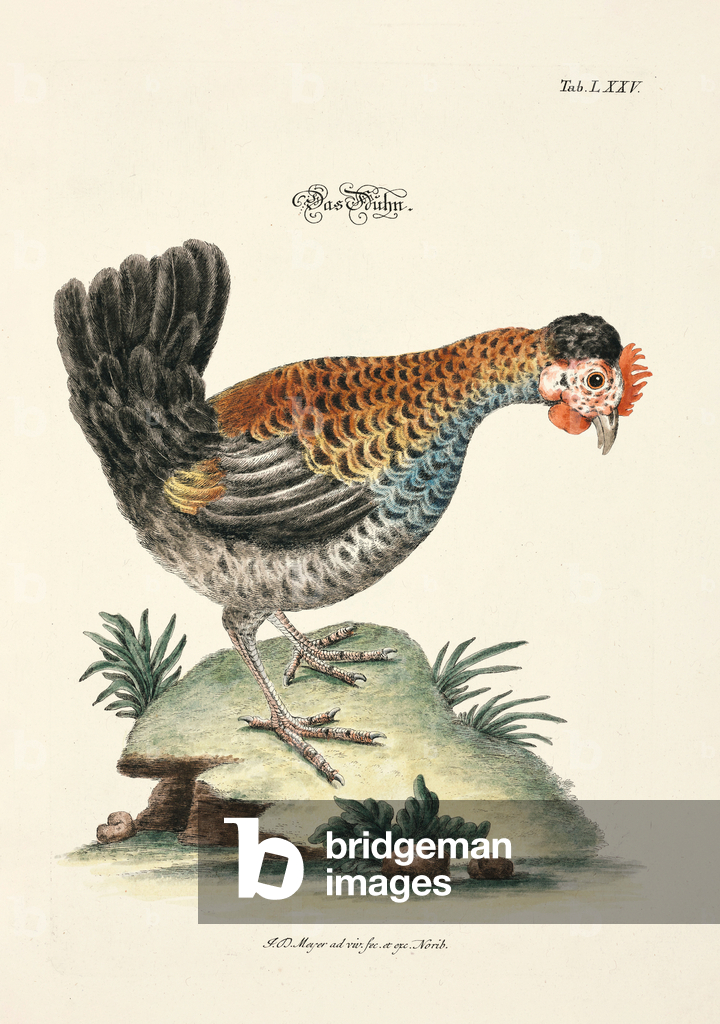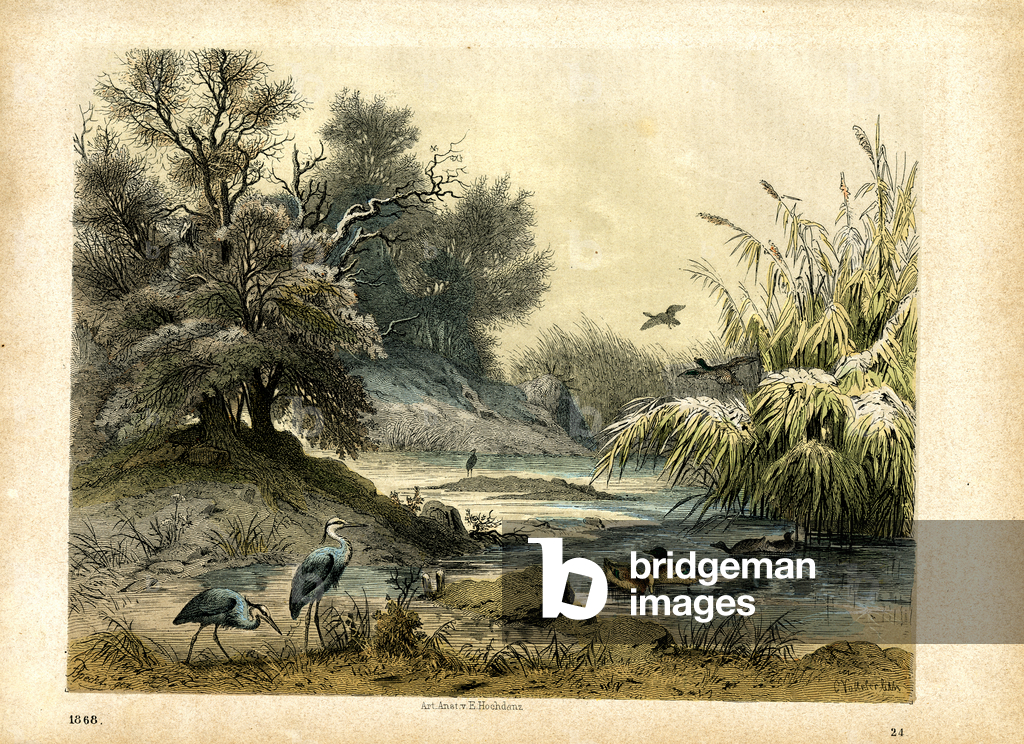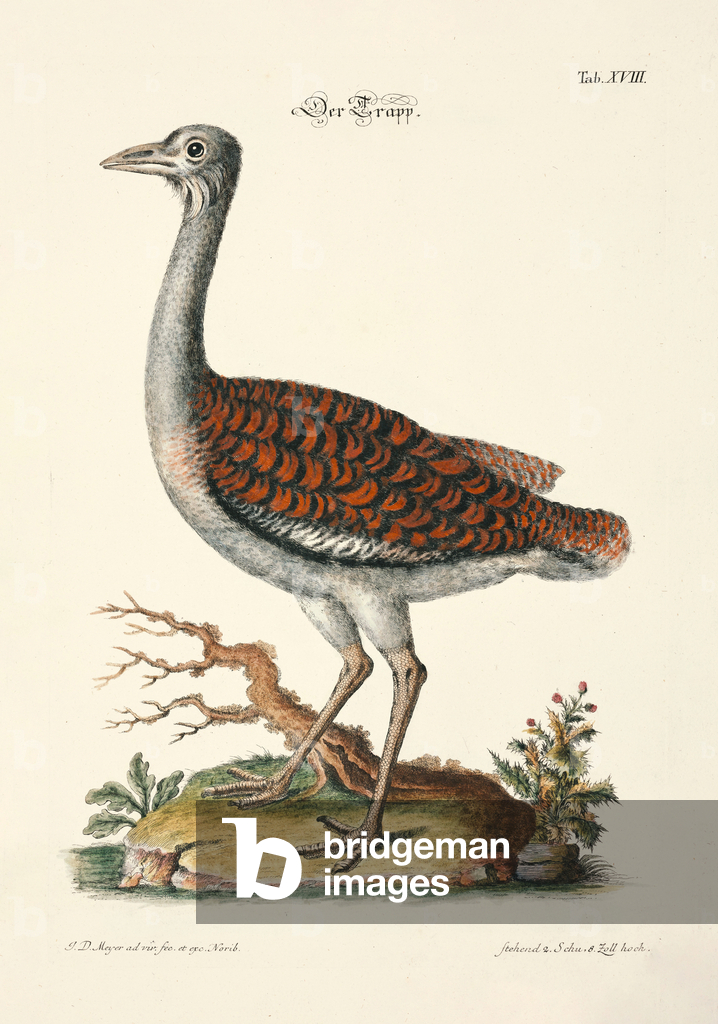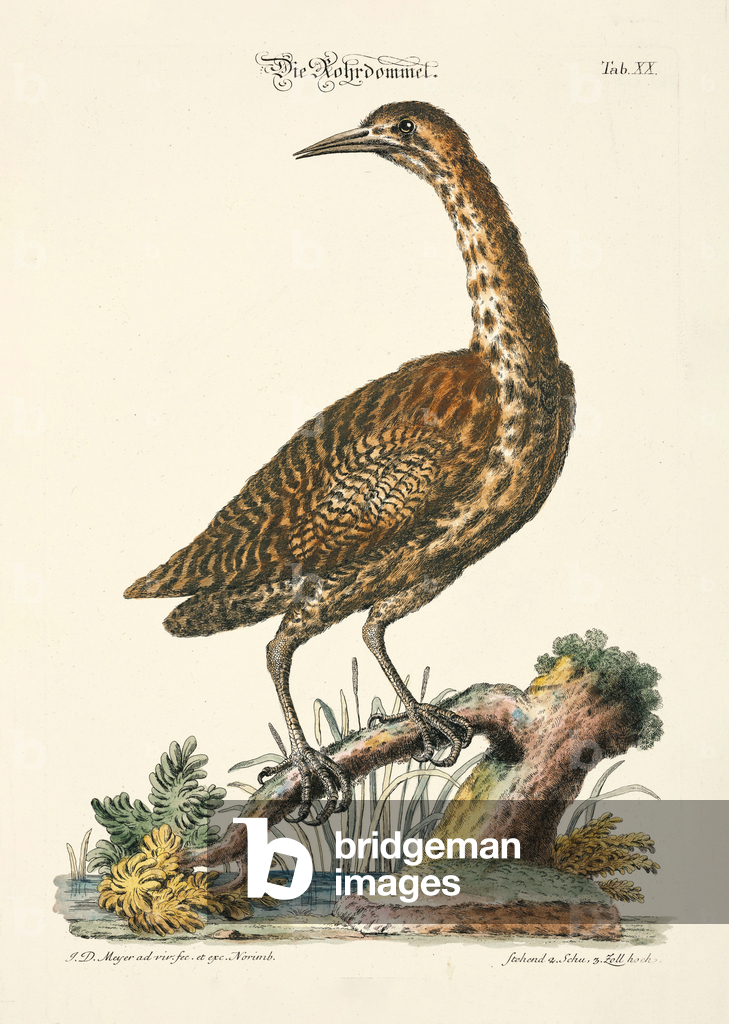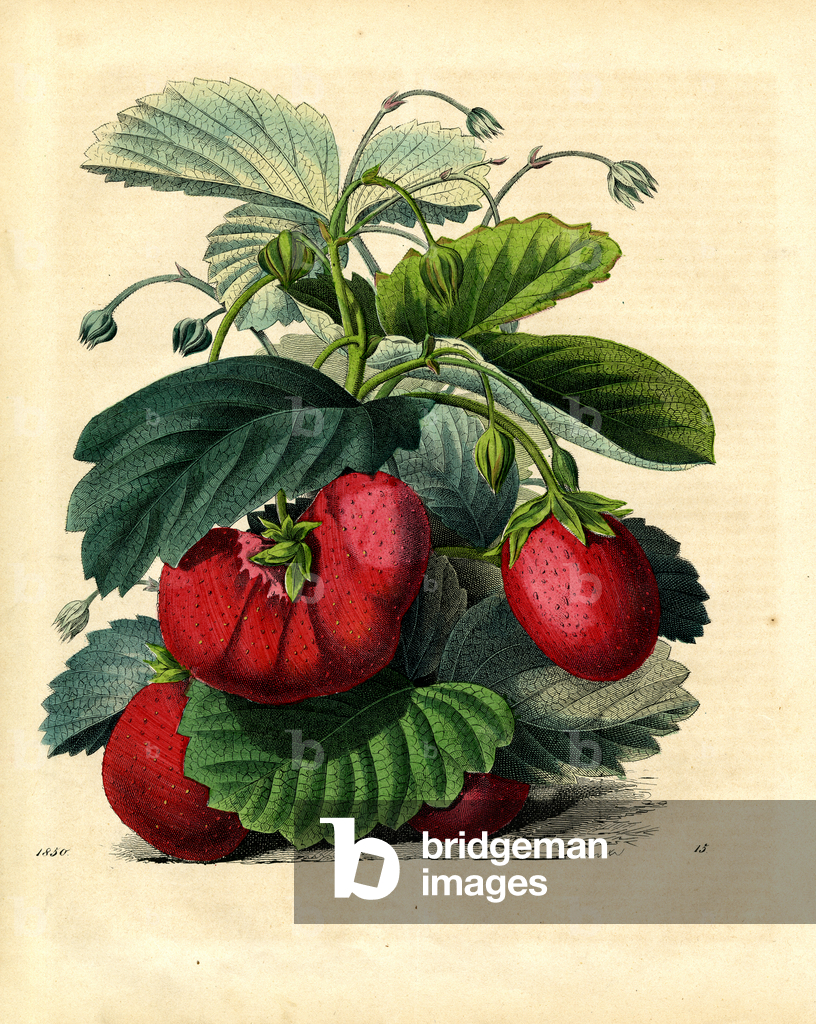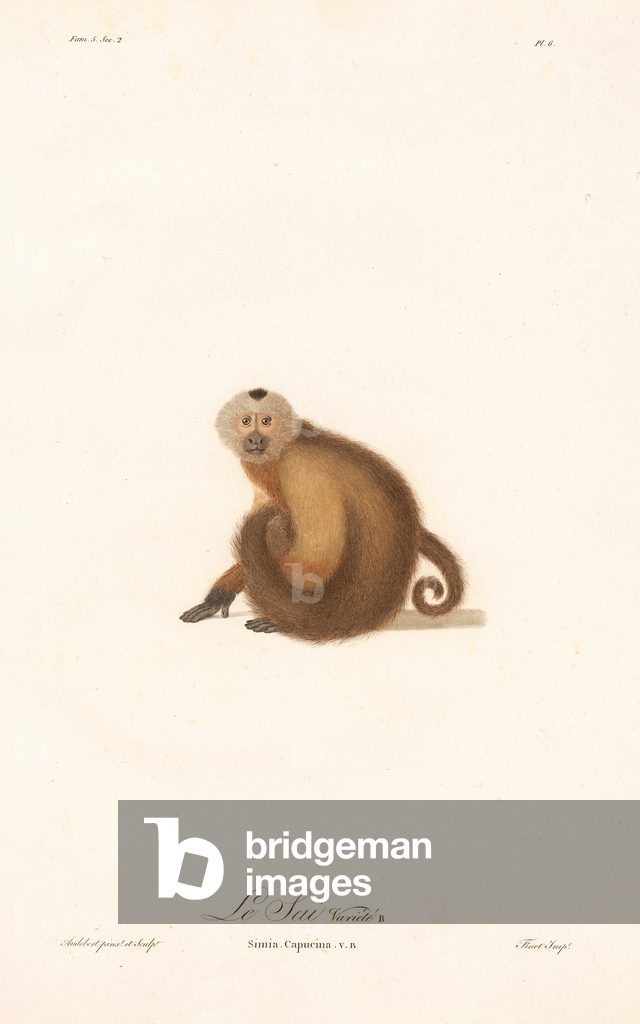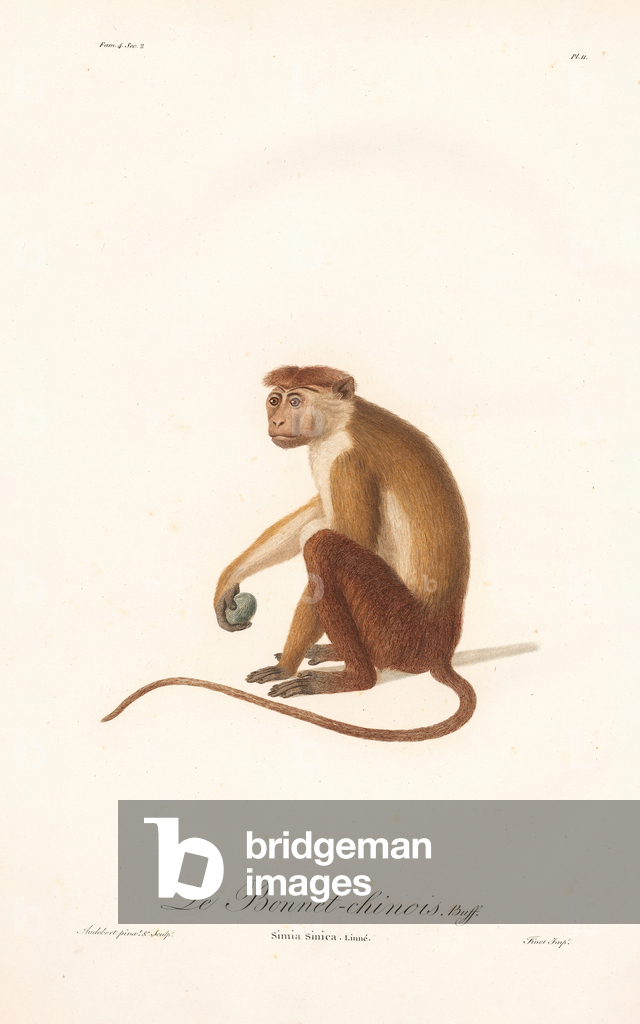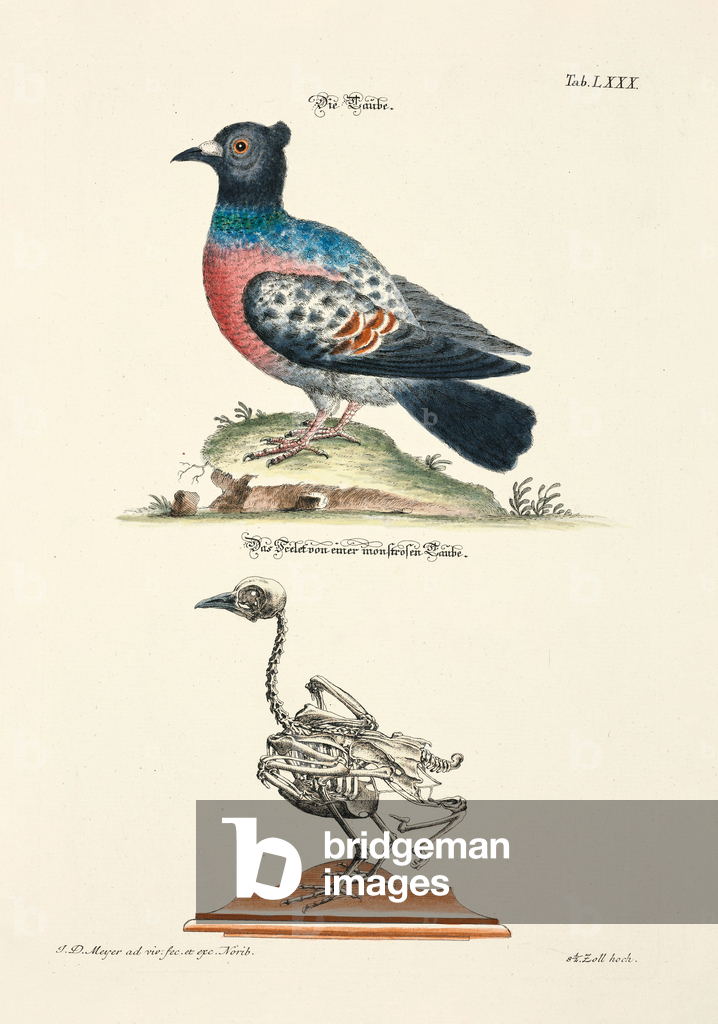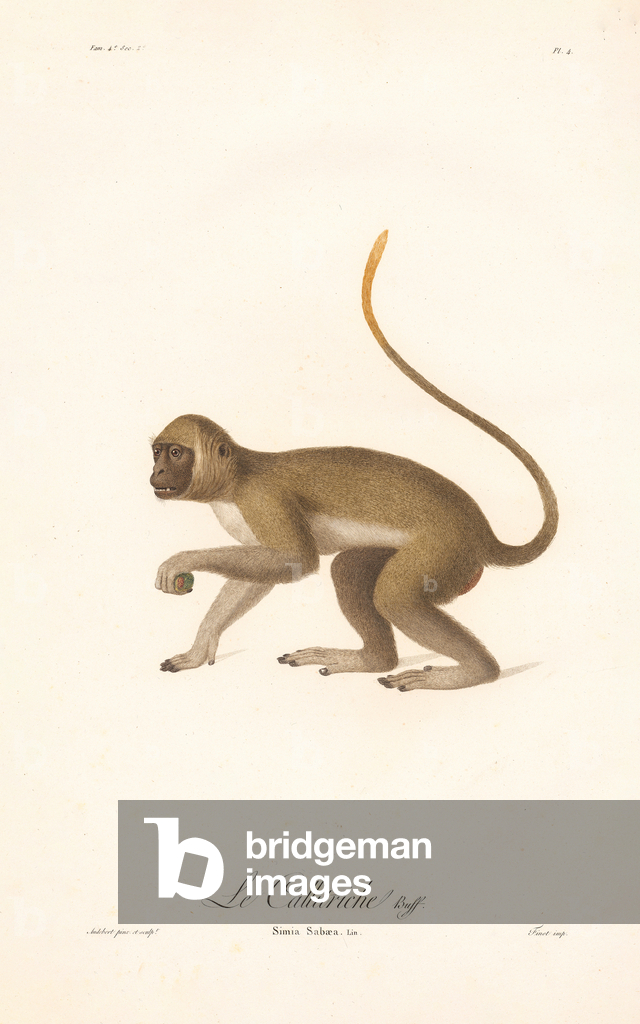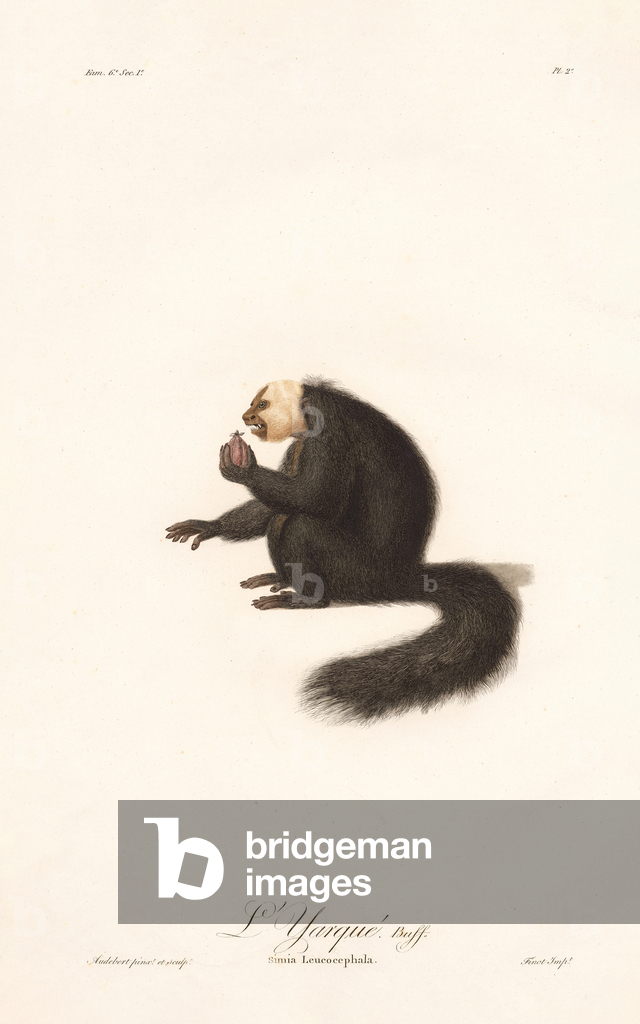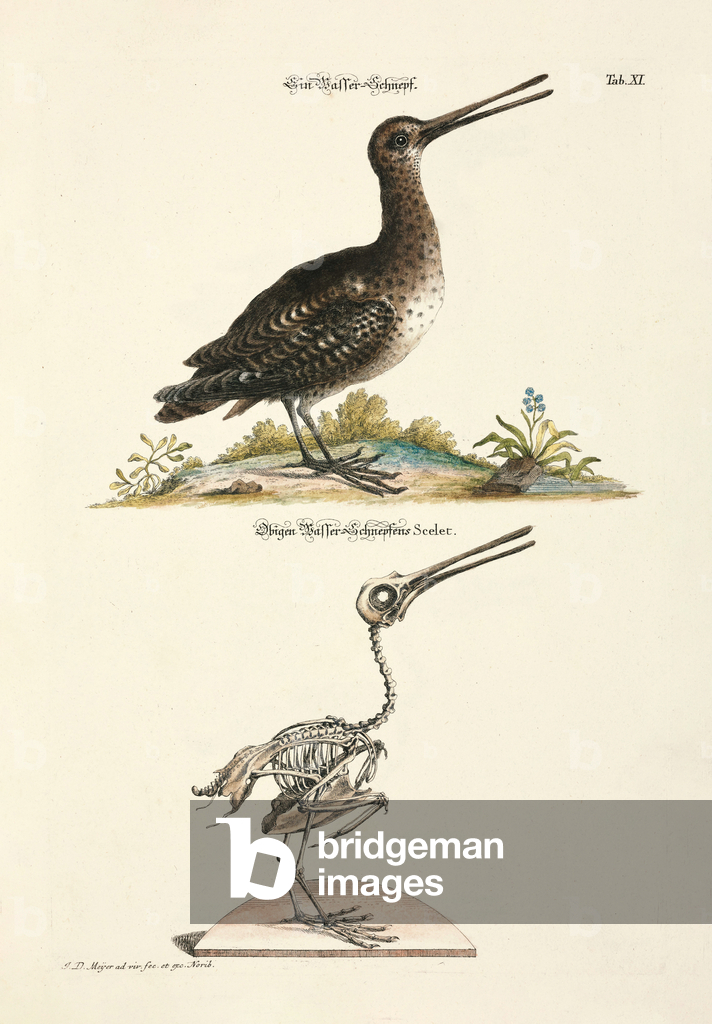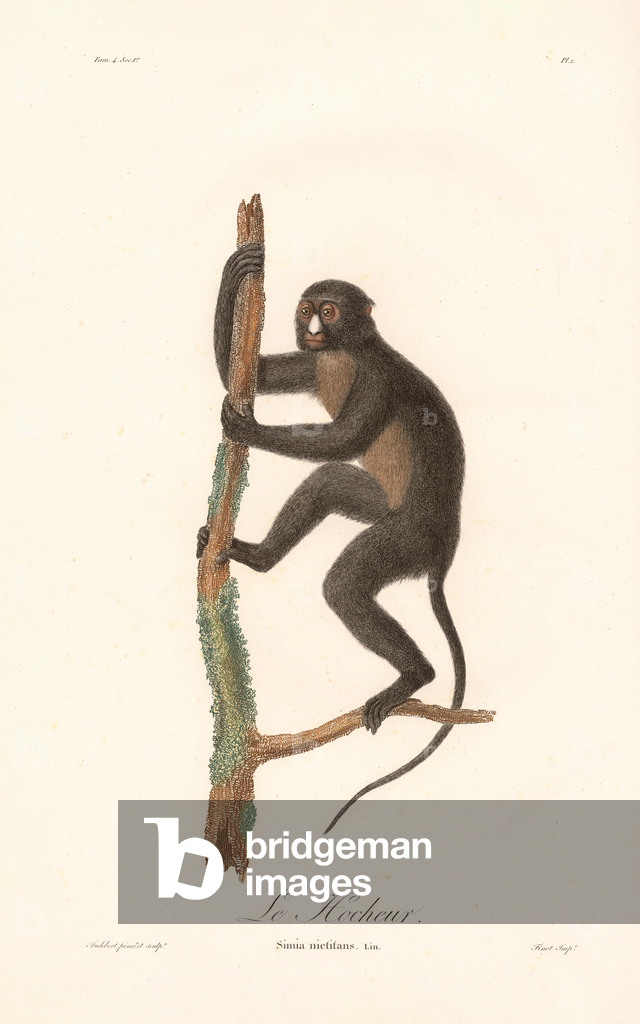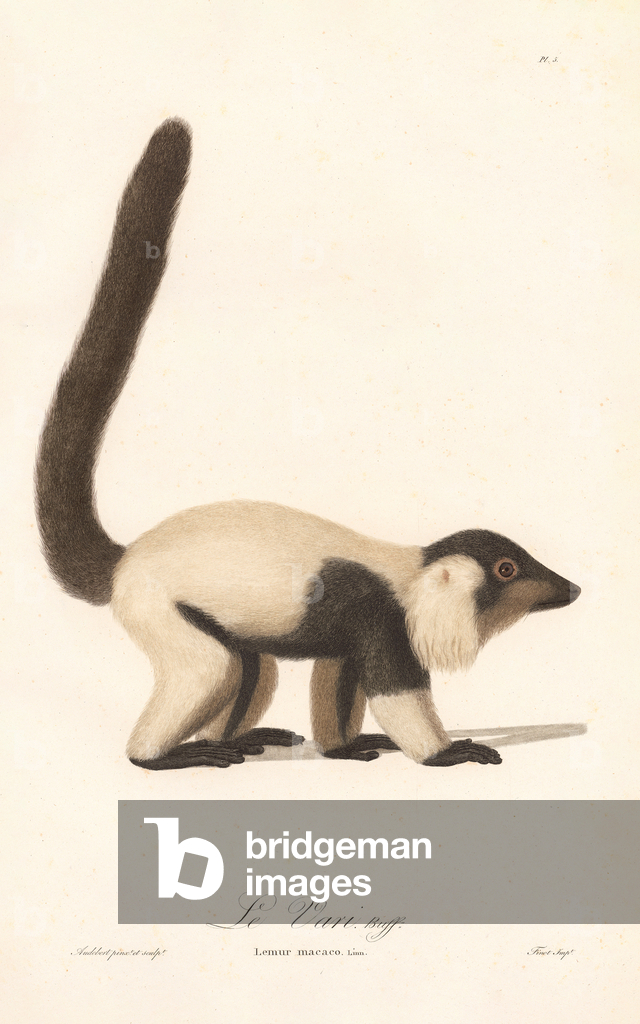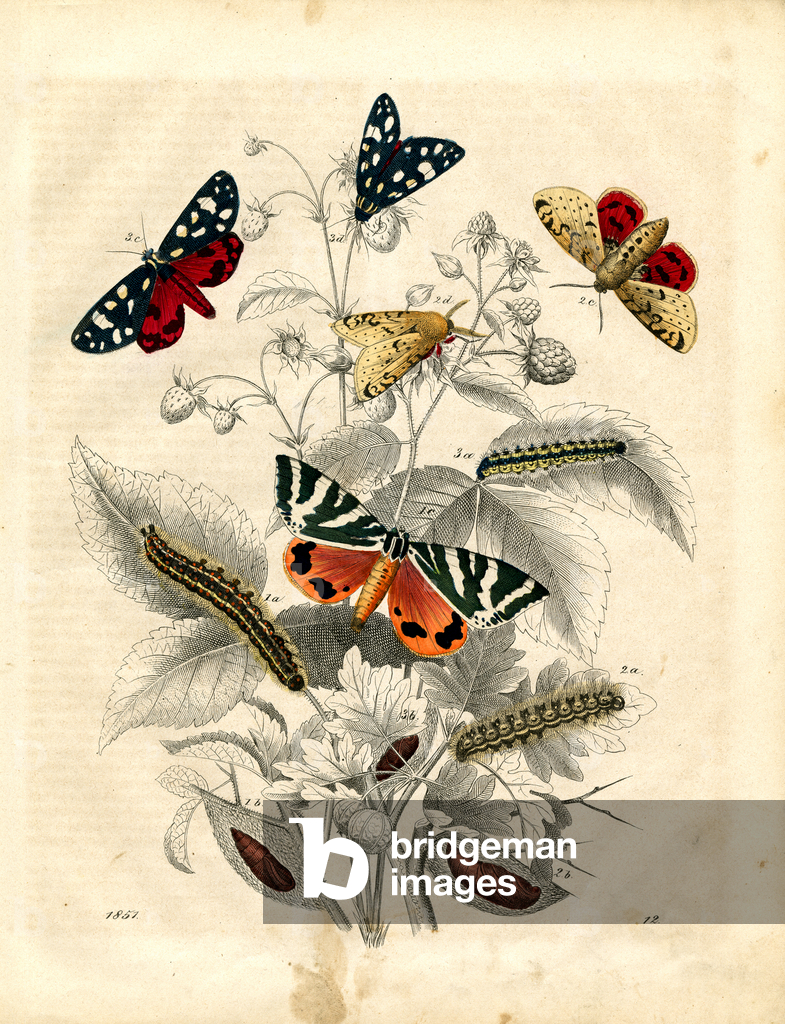
PRX11868603
The illustration shows various European butterfly species with their developmental stages on raspberry plants (Rubus idaeus). Featured are the Meadow Brown (Maniola jurtina), the Small Tortoiseshell (Aglais urticae), and the White Ermine moth (Spilosoma lubricipeda) with their characteristic color patterns. The image depicts caterpillars, pupae, and adult butterflies, illustrating the complete metamorphosis process of these insects, which serve as important pollinators in Central European ecosystems.. From Das Buch der Welt, ein Inbegriff des Wissenswürdigsten und Unterhaltendsten aus den Gebieten der Naturgeschichte, Naturlehre, Länder- und Völkerkunde, Weltgeschichte, Götterlehre etc. Mit vielen colorirten und schwarzen Abbildungen. Published by Julius Hoffmann, Hoffmannsche Verlags-Buchhandlung, Stuttgart, 1842 - 1868.. [butterflies, Lepidoptera, Meadow Brown, Maniola jurtina, Small Tortoiseshell, Aglais urticae, White Ermine moth, Spilosoma lubricipeda, metamorphosis, caterpillar, pupa, imago, raspberry, Rubus idaeus, pollinators, insects, entomology, natural history, zoology, hand-coloured copper engraving]
DC


